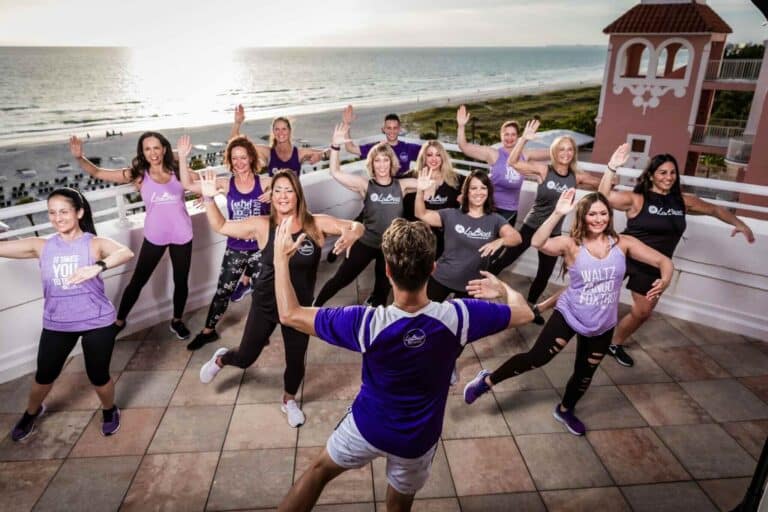The past year has brought a pandemic, sweeping change in the workplace, and the lowest life-ratings since the recession of 2008. When work went remote, teams dispersed, child-care disappeared, and uncertainty became the norm, many employees were left stressed and worried.
Gallup explains the Engagement-Wellbeing Paradox like this: during the COVID-19 pandemic, employee engagement increased as people found ways to stay connected to the mission of their organizations and one another. While employee health and well-being would normally increase along with this boost in engagement, it has instead taken a dangerous hit over the past 12 months. Many people in the workforce have reached, or are dangerously close to reaching, burnout.
Given everything going on, we wanted to provide our HR partners with a resource that would look closely at the state of employee health and well-being, manage employee burnout, and the impact the workplace has on safeguarding employee wellness through holistic wellness programs. So in partnership with the HR Research Institute, we developed the State of Employee Health and Well-being 2021 Report.
The full report is a wealth of information on employees’ responses to the pandemic, mental health and stress in the workplace, the effectiveness and outcomes of corporate wellness programs, and a look into the future of employee health and well-being at work.
The State of Employee Health and Well-being 2021 survey ran in December 2020 and January 2021. We gathered 421 usable, complete, and partial responses, primarily from HR professionals in virtually every industry. Respondents are from all over the world, with the majority from North America, especially the United States.
Key findings from the report show the continued trend that workplace wellness is closely tied with the overall success of the employees and organization. Let’s explore some of these important results from the larger study.
What HR Wellness Efforts Proved Effective?
Programs related to workplace well-being are common, with 94 percent of responding HR professionals saying their organization strives to enhance at least one type of employee well-being through a specific initiative. Many HR professionals also said that their organizations have done a good job at safeguarding their employees during COVID. It has been a tough year for HR departments, no doubt, as many professionals have adapted and launched new programs and ways to support their employees during tremendous times of change.
44 percent of companies continue to pursue a workplace wellness approach that also includes financial, social, and workplace environmental well-being. In addition to the more well-known aspects of employee well-being such as physical or mental wellness, many companies are branching out to include holistic programs that encompass finance, environment, and social considerations. Additionally, most HR professionals say that these wellness efforts are moderately or highly effective. These levels of effectiveness are consistent among mid- to large- sized organizations but dip to just 20 percent high effectiveness in companies with fewer than 100 employees.
A HR Response to Crisis
As can all attest, the COVID-19 pandemic has had an enormous impact on employees’ well-being over the past year. Our report found that 64 percent of all responding HR professionals say the pandemic has significantly reduced the overall well-being of their workforce, with negative stress being the most prevalent issue. If this sounds familiar, you are not alone.
In response to this crisis, many HR professionals like you have adopted a variety of initiatives to help improve employee well-being during the pandemic. 79 percent of organizations we surveyed allowed employees to work remotely to protect their safety and reduce stress at home.
Other initiatives included instituting mask policies, enforcing social distancing, ensuring employees had resources and support while working during the pandemic, providing training to managers to better support their teams, implementing COVID-19 testing policies, creating regular opportunities for employees to “check in”, offering more paid leave opportunities, and providing additional employee benefits beyond the ones listed here.
About half of the survey respondents said that their organization now offers virtual healthcare and/or telemedicine where it did not before. These virtual care arrangements represent an important trend in the corporate wellness space. A recent study by The American Journal of Managed Care shows that telemedicine – by a clear margin – has become the preferred approach when compared to a traditional office visit.
Learn about additional wellness trends and recommendations for your hybrid workforce in our latest ebook.
How to Support Employee Well-being Today, and Beyond
While some companies chose only two or three of these well-being efforts, many organizations took a multidimensional view of employee well-being and provided initiatives that addressed all five types of holistic workplace wellness: physical well-being, mental/emotional well-being, well-being related to the workplace environment, financial well-being, and social well-being. 52 percent of HR professionals say that their efforts over the past year have improved their employees’ experience at work.
Mental health has also become a top priority for many organizations, with 63 percent of the respondents agreeing that mental health is among their HR department’s top 5 priorities. While anxiety, depression, and feelings of uncertainty have continued to rise since the beginning of the pandemic, stress remains a top concern for organizations and an area where employees need ongoing support.
Companies must continue to address the negative impact that unresolved stress has on their employees’ performance in order to retain top talent. We, here at Burnalong, have found building in mindfulness breaks, scheduling time out during the day to focus on our wellness, and even doing team challenges has helped employees reduce stress, manage burnout and build connections with colleagues. While the survey findings aren’t surprising, they do elevate the need for HR leaders to proactively spend their wellness dollars on inclusive programming that goes beyond fitness.
Over the next two years, many of the leaders we surveyed plan to extend many of their efforts to support well-being in various ways, providing health-related information resources,
monitoring workplace wellness, and allowing employees to personalize their environments. It will be no small effort to continue to support employees through the aftermath of the past year.
We hope this report brings many valuable insights and ideas for implementing wellness initiatives at an even greater level at your organization. Discover the other key well-being trends in the full report and if you would like to talk about bringing Burnalong to your team, please schedule some time with our team today.





